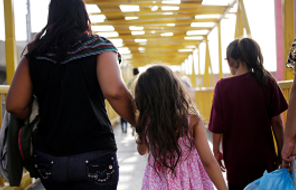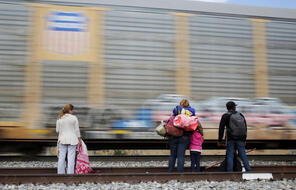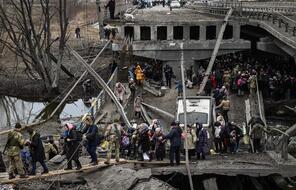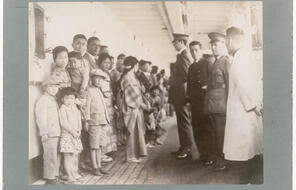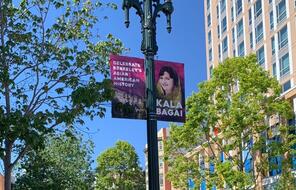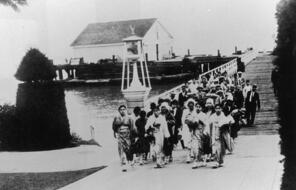Hope Frye's Testimony on Child Migrant Detention
Subject
- History
- Social Studies
Language
English — USUpdated
This reading is used in the Teaching Idea Different Perspectives on Migrant Detention.
The following excerpts are from the testimony of immigration lawyer and advocate Hope Frye, submitted to the U.S. House of Representatives Committee on Oversight and Reform, Subcommittee on Civil Rights and Civil Liberties, for a hearing on child migrant detention held on July 10, 2019.
My name is Hope Frye. I am the Executive Director of Project Lifeline, a non-profit dedicated to bringing attention to the conditions of detained immigrant children. I am also an attorney with more than 40 years of experience practicing immigration law. . . .
I selected the attorneys and was team lead on a … monitoring visit to the Rio Grande Valley (RGV) border patrol stations from June 10-14 [2019]. Our attorneys interviewed 103 children and parents with children at the Ursula Processing Center and at the Weslaco, Brownsville, Rio Grande, Donna, McAllen and Fort Brown Border Patrol Stations. . . .
Although we are permitted to inspect facilities run by ORR [the Office of Refugee Resettlement] and ICE [Immigration and Customs Enforcement], we are restricted to office areas and forbidden to see inside [Customs and Border Protection] detention centers. Our understanding of the physical facility in which children are held and what happens to them there, is informed by what the children tell us . . .
Some children were too traumatized to even interact with us. Children who were lucid enough to interact with us were glad to see us. They were grateful for the opportunity to sit in an office which is warmer than their cages, to sit on a chair not on a concrete floor, to sit close to us—adults with smiling faces—and talk to a respectful person glad to see them, about the horrendous things that are happening. As the conversations unfolded, we struggled to maintain our composure, emotions carried away by the cruelty and deprivation all the children describe. We are uniformly incredulous at how the government can treat children so inhumanely in our name and saddened to find the children more traumatized and in worse shape than even the most experienced of us had imagined. . . .
Food is still inadequate
Children in the [Rio Grande Valley] are going hungry. They are given non-nutritious food and not enough of that. Pureed food necessary for infants 6-12 months old, is completely missing. When there are bottles and formula, there is no way to wash the bottles, so they become contaminated.
Although the diet varies somewhat station to station, a typical meal is similar to that served three times a day at Ursula except that there is fresh fruit. Fruit and vegetables are unusual. At Ursula, it’s either a bean burrito or ham sandwich, potato chips, an apple and a bottle of water. Children told us that the food was inedible; that it gave them a stomach ache because the rice in the burrito was undercooked or because it was frozen, that it wasn’t “even suitable for a dog.” The ham sandwich is a single slice between two pieces of bread and children try to find some part they can eat because ham is often slimy just about to spoil. I saw what purports to be juice but appears to be only colored sugar water.
Drinking Water is not readily available
Water makes up more than half our body weight and we can’t live more than a few days without it. Fresh, clean water is vital for good health. Breast milk is about 90% water and hydration is essential to its production.
Many of the children we saw were teen moms with children under the age of one. Some of the babies were exclusively breast fed. All these moms complained that they got inadequate water to assure enough milk production which endangers the health of their infants.
The uncle of a one year old told us that the water in the jug in his cage tasted awful like it was from a dirty well. A breast-feeding mother of a two-year-old said that the water available to her tasted like dirt so she couldn’t drink it.
The experience of 16-year-old mother breast feeding her 8-month-old daughter is common. “The water was very bad. I didn’t eat for two days. The baby only had a very little bit of milk. The water came from a jug, smelled bad, and people had to share cups. It was absolutely terrible, and I could not drink it.”
There’s still no soap
. . . The children we saw were filthy wearing the same wet and mud caked clothes in which they traveled. Many were covered in mucus and vomit. Babies had soiled diapers. The smell of the children was foul.
No child had warm clothing, and many were not fully clothed, this despite the extreme cold in the holding areas. A four-year-old who was well past potty training was given only a diaper to wear and told there were no pants for him. Babies were in onesies with no sweater, jacket or socks. . . .
Many children had not showered, including a 17-year-old mother and her 10-month-old son who had been held for approximately 30 days without having the opportunity to shower.
The water available to wash sometimes smelled like urine. One man told us that he waited until he got water with a meal and then used some to clean his infant nephew.
There was no soap, no hair brush, no tooth brush, no toothpaste. 1
- 1Written testimony of Hope Frye, U.S. House of Representatives Committee on Oversight and Reform, Subcommittee on Civil Rights and Civil Liberties, Hearing on Kids in Cages: Inhumane Treatment at the Border, July 10, 2019, 116th Congress, 2019.
How to Cite This Reading
Facing History & Ourselves, “Hope Frye's Testimony on Child Migrant Detention”, last updated July 15, 2021.

